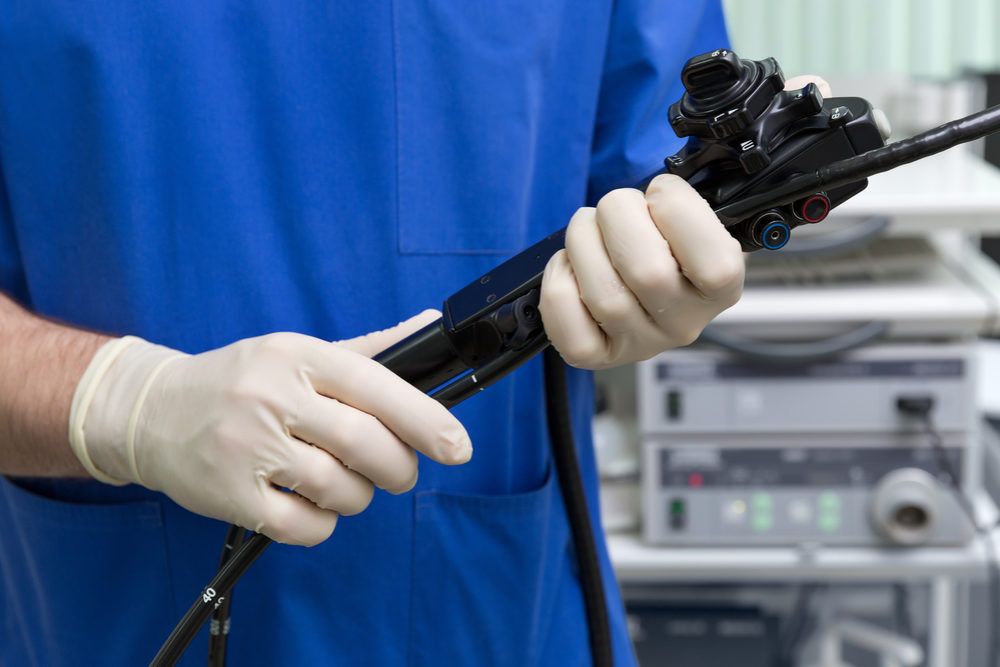Duodenoscope Cleaning Measures Expanded To Avoid Hospital Infection Outbreaks

Following a number of hospital infection outbreaks linked to duodenoscopes, new instructions have been issued about how to clean the device before using it on another patient. However, federal regulators warn that the “reprocessing” instructions may be too technically difficult for some facilities to follow.
On Tuesday, the FDA issued safety communication about new detailed instructions for cleaning duodenoscopes used in endoscopic retrograde cholangiopancreatography (ERCP) procedures.
The new cleaning instructions come after a number of duodenoscope infection outbreaks have been reported at hospitals that followed previous repurposing instructions, including a February outbreak of carbapenem-resistant enterobacteriaceae (CRE) infections at UCLA’s Ronald Reagan Medical Center. That outbreak caused at least seven infections, two deaths, and raised concerns that nearly 200 other patients had been placed at risk by duodenoscopes manufactured by Olympus Corp.

Did You Know?
Millions of Philips CPAP Machines Recalled
Philips DreamStation, CPAP and BiPAP machines sold in recent years may pose a risk of cancer, lung damage and other injuries.
Learn MoreThe infections have been linked to problems with the “reprocessing” instructions used to clean the devices for use by another patient. FDA reviewers have indicated that the prior instructions sent out by the manufacturer were inadequate and that even if the recommended steps were followed to clean ERCP endoscopes, flaws in the design may allow them to become easily contaminated.
Although the FDA has announced new instructions, it acknowledges that the process may be too difficult for hospitals to follow, meaning that individuals undergoing an endoscopic retrograde cholangiopancreatography (ERCP) procedure may still face a risk of infection.
In addition to the manufacturers’ cleaning instructions, the FDA recommends hospitals using the devices take one or more of the following steps:
- Microbiological culturing
- Ethylene oxide sterilization
- Use of a liquid chemical sterilant processing system
- Repeat high-level disinfection
“We recognize that not all health care facilities can implement one or more of these measures, which require specific resources, training, and expertise,” the agency notes. “Therefore, it is critical that staff responsible for reprocessing duodenoscopes have the manufacturer’s instructions readily available to promote strict adherence to the reprocessing instructions in the device labeling, understand the importance of their role in reprocessing the device, and maintain proficiency in performing these reprocessing tasks.”
ERCP Duodenoscope Infection Concerns
The most recent outbreak of antibiotic-resistant bacteria surfaced in February at the UCLA Ronald Reagan Medical Center in California, after the facility confirmed that nearly 200 patients who underwent an ERCP between October 2014 and January 2015 needed to be tested for the deadly superbug CRE due to contaminated scopes.
The confirmed infections occurred despite the medical scopes being sterilized according to manufacturers specifications, leading the FDA to issue a warning to about duodenoscope cleaning problems later that month.
During the ERCP procedure, the scope is sent through the mouth, down the throat to the stomach and small intestine to drain fluid from pancreatic and biliary ducts. These scopes have been linked to other infections for years.
A similar CRE superbug outbreak from infected duodenoscopes occurred in Chicago in 2014. The FDA called on manufacturers to submit test results for review, discovering in some cases the tests were poorly carried out.
In other instances, the cleaning and disinfecting protocol simply failed or was improperly conducted.
Under the 1996 FDA guidance, manufacturers were not required to submit data proving the cleaning protocols were effective and were allowed to set their own standards for effectiveness. The FDA is attempting to focus on this gap in oversight of regulation of medical scope cleaning protocols and potential design flaws.
Specific requirements were imposed by the FDA following the Chicago outbreak, calling for the elimination of 99.999% of microbes at several ovations on the scope.
The outbreaks call into question the safety and reliability of the current cleaning procedures. Following the UCLA outbreak, the duodenoscopes were pulled and a heightened protocol was implemented, one going above and beyond that recommended by the manufacturers.
In May, an FDA advisory committee determined that the devices “do not provide a reasonable assurance of safety and effectiveness” due to the difficulty cleaning them. The panel said that manual cleaning is still important and needs to continue, but also recommended that the FDA reclassify duodenoscopes from semi-critical medical devices to critical medical devices and said reprocessing needs to be taken from “high level disinfection” processes to full sterilization.
Despite the concerns, the panel also determined that the benefits provided by ERCP procedures still outweigh the risks associated with the use of duodenoscopes. They called on the FDA to develop a guide of best practices to make sure that manufacturer instructions are followed, in addition to the need for better instructions overall.
Several duodenoscope infection lawsuits have already been filed against Olympus over the infections linked to the UCLA outbreak. The complaints allege that design problems that make the scopes especially difficult to clean, placing patients at higher risk of contracting illness.
Exposure to the CRE superbug following an ERCP poses a serious risk of illness, as the bacteria kills 40% to 50% of patients after spreading to the bloodstream.
Get more articles like this sent directly to your inbox.
"*" indicates required fields




0 Comments